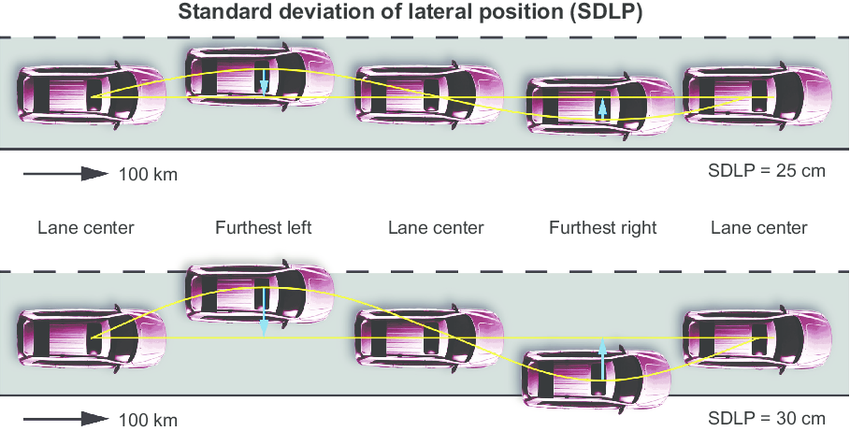A landmark study on how cannabis affects driving ability has shown that cannabidiol (CBD), a cannabis component now widely used for medical purposes, does not impair driving, while moderate amounts of the main intoxicating component tetrahydrocannabinol (THC) produce mild driving impairment lasting up to four hours.
The study was led the Lambert Initiative for Cannabinoid Therapeutics at the University of Sydney and conducted at Maastricht University in the Netherlands. It was published today in the prestigious Journal of the American Medical Association.
Lead author Dr Thomas Arkell said: “These findings indicate for the first time that CBD, when given without THC, does not affect a subject’s ability to drive. That’s great news for those using or considering treatment using CBD-based products.”
There has been substantial growth in medical treatment using cannabis-related products in Australia and overseas. This includes increasing use of CBD-containing products for conditions such as epilepsy, anxiety, chronic pain and addictions. Many currently available products also contain a mixture of THC and CBD.
The research involved people inhaling vaporised cannabis containing different mixes of THC and CBD, then going for a 100-kilometre drive under controlled conditions on public highways both 40 minutes and four hours later. Cannabis containing mainly CBD did not impair driving while cannabis containing THC, or a THC/CBD mixture, caused mild impairment measured at 40 minutes later but not after four hours.
Dr Arkell said: “With cannabis laws changing globally, jurisdictions are grappling with the issue of cannabis-impaired driving. These results provide much needed insights into the magnitude and duration of impairment caused by different types of cannabis and can help to guide road-safety policy not just in Australia but around the world”.
“Road safety is a primary concern,” Dr Arkell said. “These results should allow for evidence-based laws and regulation for people receiving medical cannabis.”
The Academic Director of the Lambert Initiative, Professor Iain McGregor, said: “We were delighted to have the opportunity to collaborate with Professor Jan Ramaekers and his team on this study. Studying the effects of cannabis on driving with such precision in a real-world context is incredibly important.
“The results should reassure people using CBD-only products that they are most likely safe to drive, while helping patients using THC-dominant products to understand the duration of impairment.”
METHOD
The study involved giving 26 healthy participants four different types of cannabis in a random order to vaporise on four separate occasions. Each participant’s driving performance was then assessed on the road in real-world conditions along a 100-kilometre stretch of public highway in a dual control car with a driving instructor present.
The tests were done at Maastricht University in the Netherlands using a well-established scientific test that measures standard deviation of vehicle position (SDLP), an index of lane weaving, swerving and overcorrecting. SDLP increases under the influence of alcohol and drugs such as Valium and Stilnox.
Participants vaporised cannabis containing mainly THC, mainly CBD, THC and CBD in combination, or placebo cannabis (no active components). The amount of THC vaporised by participants was enough to cause strong feelings of intoxication.
To test how the different types of cannabis affect driving, participants completed two one-hour, on-road highway driving tests commencing at 40 minutes and at four hours after inhaling vaporised cannabis.
Example of standard deviation of lateral position. Image from Verster and Roth (2011) International Journal of General Medicine.
Professor McGregor said: “With rapidly changing attitudes towards medical and non-medical use of cannabis, driving under the influence of cannabis is emerging as an important and somewhat controversial public health issue.
“While some previous studies have looked at the effects of cannabis on driving, most have focused on smoked cannabis containing only THC (not CBD) and have not precisely quantified the duration of impairment.
“This is the first study to illustrate the lack of CBD effects on driving and to also provide a clear indication of the duration of THC impairment.”
DOWNLOAD the paper, research images and photos of the researchers at this link.
DOWNLOAD b-roll footage that recreates test conditions and lab tests at this link.
DECLARATION
This study was funded by the Lambert Initiative for Cannabinoid Therapeutics at the University of Sydney.
ABOUT THE LAMBERT INITIATIVE
The Lambert Initiative for Cannabinoid Therapeutics at the University of Sydney provides national and international leadership both in the science of medicinal cannabis and in the discovery and development of cannabis-based medicines.
It was established thanks to a philanthropic donation by Barry and Joy Lambert.
